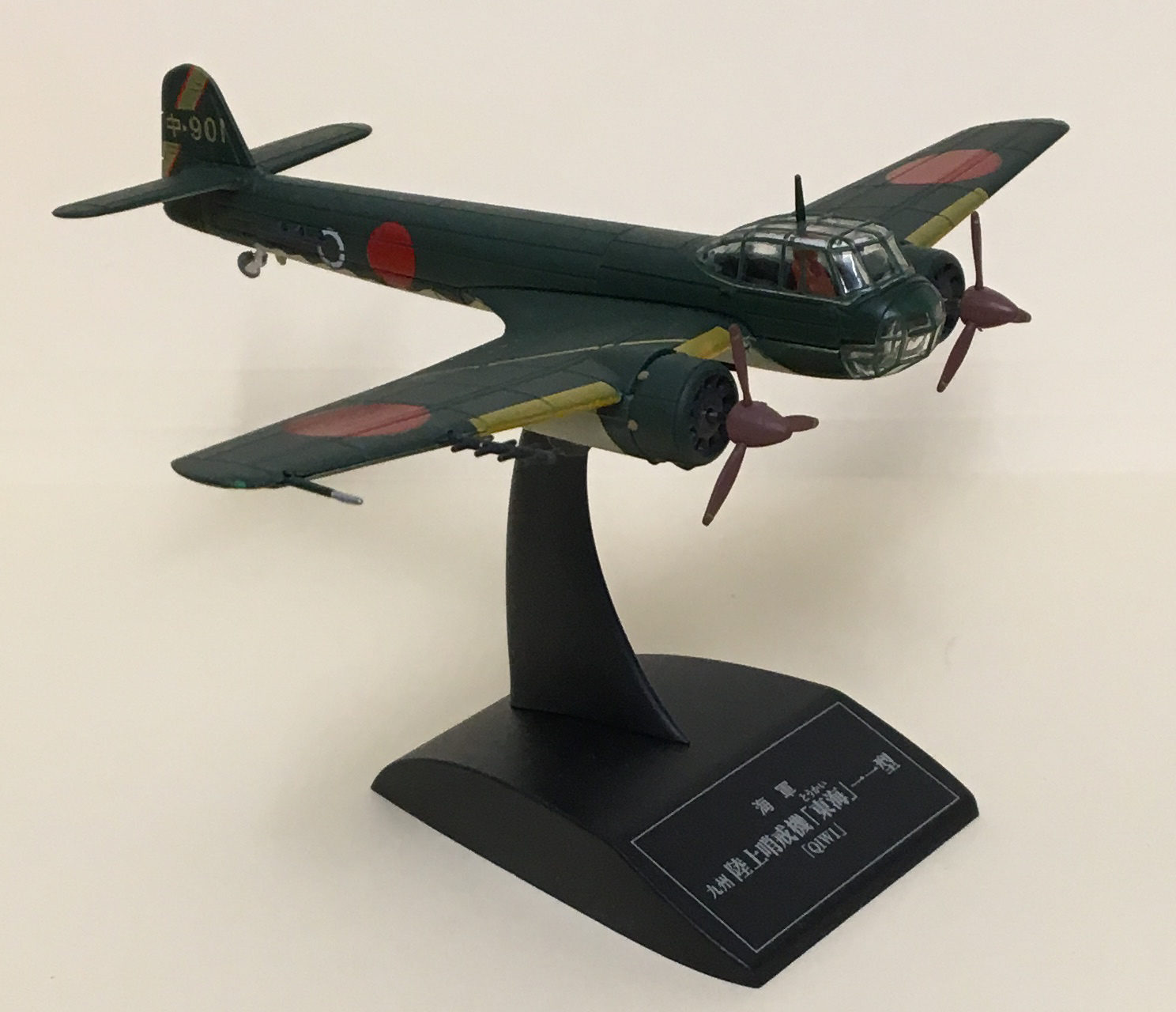
In 1942, the Imperial Japanese
Navy requested an anti-submarine aircraft that could be used to patrol
coastlines. The Kyushu Q1W1 Tokai (allied code name "Lorna") entered
service in early 1945 and looked something like a dragonfly. The
heavily glazed nose and greenhouse canopy were helpful for observing
the sea below. It used to low power engines so it could fly slow
and stay in the air for long periods without refueling. The Q1W1 was
fitted with a radar array and magnetic anamoly detection gear for
finding submarines lurking offshore. Once a sub was spotted, the Q1W1
could drop a pair of 550-lb bombs or depth charges and strafe with
combination of machine guns and cannon. The Lorna was introduced too
late in the war to have much of an impact. Kyushu produced 153 Q1W1
aircraft before the war ended.
KYUSHU Q1W1 Tokai "Lorna"

Class: Patrol, anti-submarine
Crew: 3
Engine: 2 x Hitachi GK2 Amakaze 31 9-cylinder radial (610 hp each)
Max Speed: 200 mph at 4,395 ft
Climb Rate: 750 ft/min
Service Ceiling: 14,730 ft
Range: 834 miles
Armament: 1 x .303 inch machine gun (cockpit)
Model Scale: 1:100